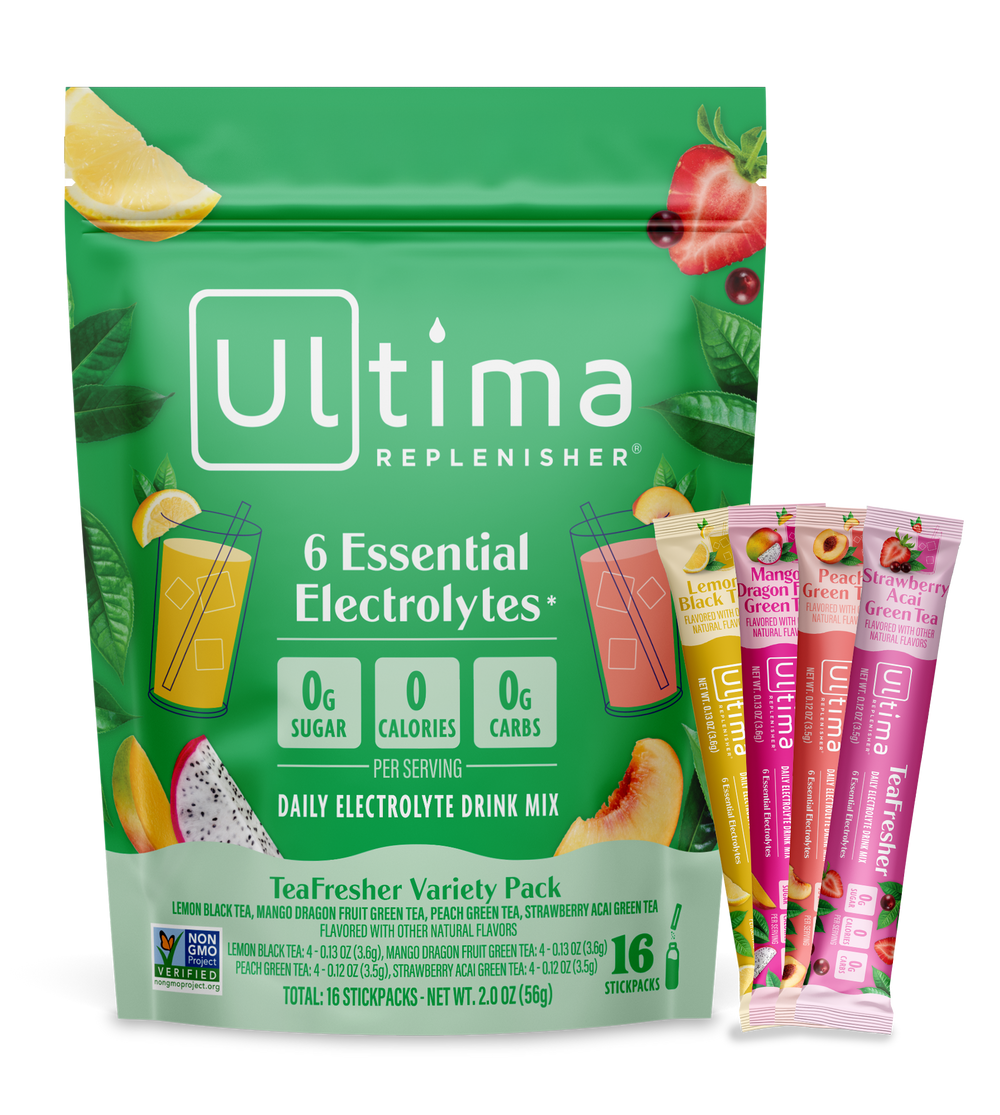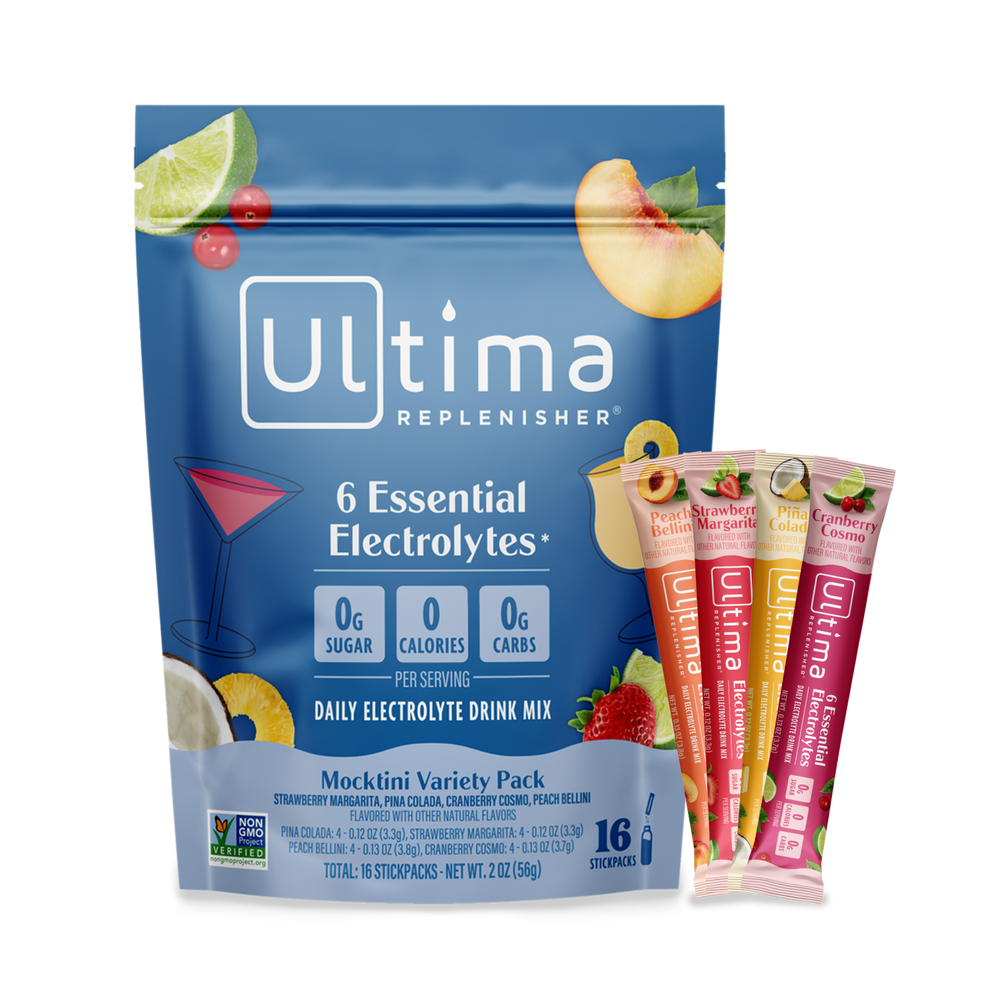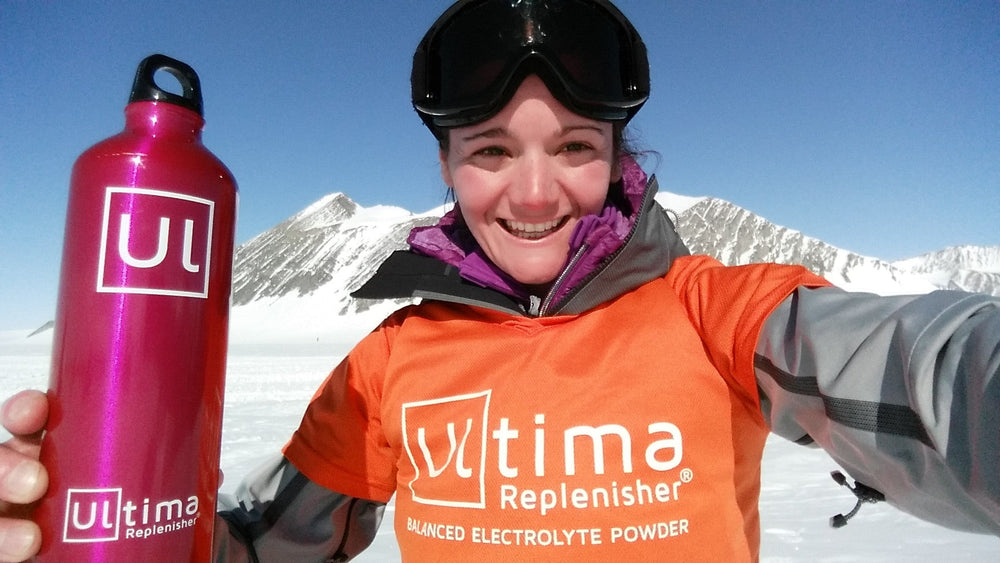The Road to 26.2 … Training In Winter Weather
I’m eight weeks into my marathon training and the weather has not warmed up much from that first cold snowy day back in January when I did my first Sunday “long run.” Anyone who trains for a marathon knows that each week you slot in time to do a long run to increase your mileage and get use to the distance you will be running come race day. The first long run in marathon training starts at six miles. You gradually increase your distance on these long runs (which happen to be Sunday’s for my training) until you reach your max distance prior to race day. Some say that running 20 miles is enough (and many programs will tell you to stop at 20). I believe that the mental game of a marathon is the most difficult during mile 20 and mile 22; therefore, I always suggest to people that they make their longest run of training either 22 or 23 miles. The strongest of marathoners are those who can silence the “21 mile voice” long enough to cross the finish happy, fulfilled and standing upright.
But back to this winter training I’m experiencing… As I ran today’s 12 miles, I thought about some necessary ‘winter prep steps’ I take prior to lacing up for a long blustery run. Here are a few winter running tips I came up with and a few tips that are important for all season running too!
Sarah’s Quick Winter Tips
 This begins with the base layer, which should be polyester, silk, wool or other fabrics that are NOT cotton. You want something breathable and moisture wicking (unless you go with wool as it’s naturally odor-resistant and provides superior warmth). There are some really cool base layers now that actually warm up when you sweat. This fabric will keep you from getting chilled on those really cold days. Your middle layer should insulate you (think fleece material) and then a third layer will be your “shell”. You definitely want your shell to be windproof (and water proof might not be a bad idea too especially if you are in a rainy/snowy climate). Try getting a breathable, lightweight jacket, as there are many brands out there that sell great options.
2. Get a Grip - Sometimes it’s just unavoidable that you will be running on ice. In this case, think about wearing some ice cleats. They actually fit over your runners and help you get a grip on the icy streets and hard packed trails.
3. Don’t be a Hero - Face it, you’re not out doing your long run or your weekly short runs to get a new personal best. It’s not about breaking any records, it’s just about putting in those miles so you’re ready come race day. So don’t try to do anything that the little voice inside your head tells you, you probably shouldn’t. Such as, sprinting at the end of a long run, bursting up an icy hill (or down one), running to fast for the conditions, etc. The list could go on, just be careful out there so you’ll avoid injury and be extra ready come race day.
4. Keep Your Hydration Close To Your Heart - This is something I learned the hard way. Last week I went out for a 10 mile run with my small palm size water bottle with a scoop of my grape flavor Ultima inside. I tucked it away in the inside pocket of my outer layer excited for when the time would come to have a little shot of electrolytes (Ultima tastes so yummy that I’m literally excited for my water break). Having said that, six miles in I went to squeeze out some of my tasty beverage and it was frozen!! I was NOT impressed. Lesson here? Keep your water against your base layer under your outer shell. If not, you run the risk of it freezing like I did and you won’t be a happy camper six miles in.
Sarah’s Quick All-Season Tips
1. Be Seen - When it’s dark, snowy, pouring rain, you name it, the visibility is worse for you and the people driving cars around you. It’s extremely important to make sure you are seen on dark nights. Chances are if you are running after work, it’s already dark (at this time of year). Make sure your outer layer is reflective (as much as possible) and even think of wearing a reflective band around your arm or leg and/or a headlamp if you are going on a trail that may not be well lit. I run every Tuesday night the same six-mile path. My running buddy and I go through quite a dark park and even though we run an out and back and we are in reflective gear, we still wear headlamps. The last thing we want is for someone to come whipping into the park around the corner and not see us.
2. Apply the Vaseline - This is seriously a multi-seasonal tip. In the winter, slap some Vaseline on your exposed areas prior to your run. The ice and snow will actually stick on top of the Vaseline and prevent it from hitting your face. In the rest of the seasons, use Vaseline (or something like Body Glide) for all those parts of you that rub/chaff (think armpits, nipples, etc).
This begins with the base layer, which should be polyester, silk, wool or other fabrics that are NOT cotton. You want something breathable and moisture wicking (unless you go with wool as it’s naturally odor-resistant and provides superior warmth). There are some really cool base layers now that actually warm up when you sweat. This fabric will keep you from getting chilled on those really cold days. Your middle layer should insulate you (think fleece material) and then a third layer will be your “shell”. You definitely want your shell to be windproof (and water proof might not be a bad idea too especially if you are in a rainy/snowy climate). Try getting a breathable, lightweight jacket, as there are many brands out there that sell great options.
2. Get a Grip - Sometimes it’s just unavoidable that you will be running on ice. In this case, think about wearing some ice cleats. They actually fit over your runners and help you get a grip on the icy streets and hard packed trails.
3. Don’t be a Hero - Face it, you’re not out doing your long run or your weekly short runs to get a new personal best. It’s not about breaking any records, it’s just about putting in those miles so you’re ready come race day. So don’t try to do anything that the little voice inside your head tells you, you probably shouldn’t. Such as, sprinting at the end of a long run, bursting up an icy hill (or down one), running to fast for the conditions, etc. The list could go on, just be careful out there so you’ll avoid injury and be extra ready come race day.
4. Keep Your Hydration Close To Your Heart - This is something I learned the hard way. Last week I went out for a 10 mile run with my small palm size water bottle with a scoop of my grape flavor Ultima inside. I tucked it away in the inside pocket of my outer layer excited for when the time would come to have a little shot of electrolytes (Ultima tastes so yummy that I’m literally excited for my water break). Having said that, six miles in I went to squeeze out some of my tasty beverage and it was frozen!! I was NOT impressed. Lesson here? Keep your water against your base layer under your outer shell. If not, you run the risk of it freezing like I did and you won’t be a happy camper six miles in.
Sarah’s Quick All-Season Tips
1. Be Seen - When it’s dark, snowy, pouring rain, you name it, the visibility is worse for you and the people driving cars around you. It’s extremely important to make sure you are seen on dark nights. Chances are if you are running after work, it’s already dark (at this time of year). Make sure your outer layer is reflective (as much as possible) and even think of wearing a reflective band around your arm or leg and/or a headlamp if you are going on a trail that may not be well lit. I run every Tuesday night the same six-mile path. My running buddy and I go through quite a dark park and even though we run an out and back and we are in reflective gear, we still wear headlamps. The last thing we want is for someone to come whipping into the park around the corner and not see us.
2. Apply the Vaseline - This is seriously a multi-seasonal tip. In the winter, slap some Vaseline on your exposed areas prior to your run. The ice and snow will actually stick on top of the Vaseline and prevent it from hitting your face. In the rest of the seasons, use Vaseline (or something like Body Glide) for all those parts of you that rub/chaff (think armpits, nipples, etc). 3. Log Your Distance - Be proud of the long runs you complete! They are helping you reach your main goal and making you a better runner overall. Share them with your family or even post about them on Facebook. You deserve the extra attention for getting up at 6am on a Saturday to hit the trail for two hours while everyone else you know is still in bed. You just never know if you’re motivating someone to take that next step in his or her fitness routine (or maybe even their first).
That’s it for now! Happy running out there…. Let me know how your training is coming along. I’d love to hear of other people’s successful running stories.
-Sarah
3. Log Your Distance - Be proud of the long runs you complete! They are helping you reach your main goal and making you a better runner overall. Share them with your family or even post about them on Facebook. You deserve the extra attention for getting up at 6am on a Saturday to hit the trail for two hours while everyone else you know is still in bed. You just never know if you’re motivating someone to take that next step in his or her fitness routine (or maybe even their first).
That’s it for now! Happy running out there…. Let me know how your training is coming along. I’d love to hear of other people’s successful running stories.
-Sarah
 This begins with the base layer, which should be polyester, silk, wool or other fabrics that are NOT cotton. You want something breathable and moisture wicking (unless you go with wool as it’s naturally odor-resistant and provides superior warmth). There are some really cool base layers now that actually warm up when you sweat. This fabric will keep you from getting chilled on those really cold days. Your middle layer should insulate you (think fleece material) and then a third layer will be your “shell”. You definitely want your shell to be windproof (and water proof might not be a bad idea too especially if you are in a rainy/snowy climate). Try getting a breathable, lightweight jacket, as there are many brands out there that sell great options.
2. Get a Grip - Sometimes it’s just unavoidable that you will be running on ice. In this case, think about wearing some ice cleats. They actually fit over your runners and help you get a grip on the icy streets and hard packed trails.
3. Don’t be a Hero - Face it, you’re not out doing your long run or your weekly short runs to get a new personal best. It’s not about breaking any records, it’s just about putting in those miles so you’re ready come race day. So don’t try to do anything that the little voice inside your head tells you, you probably shouldn’t. Such as, sprinting at the end of a long run, bursting up an icy hill (or down one), running to fast for the conditions, etc. The list could go on, just be careful out there so you’ll avoid injury and be extra ready come race day.
4. Keep Your Hydration Close To Your Heart - This is something I learned the hard way. Last week I went out for a 10 mile run with my small palm size water bottle with a scoop of my grape flavor Ultima inside. I tucked it away in the inside pocket of my outer layer excited for when the time would come to have a little shot of electrolytes (Ultima tastes so yummy that I’m literally excited for my water break). Having said that, six miles in I went to squeeze out some of my tasty beverage and it was frozen!! I was NOT impressed. Lesson here? Keep your water against your base layer under your outer shell. If not, you run the risk of it freezing like I did and you won’t be a happy camper six miles in.
Sarah’s Quick All-Season Tips
1. Be Seen - When it’s dark, snowy, pouring rain, you name it, the visibility is worse for you and the people driving cars around you. It’s extremely important to make sure you are seen on dark nights. Chances are if you are running after work, it’s already dark (at this time of year). Make sure your outer layer is reflective (as much as possible) and even think of wearing a reflective band around your arm or leg and/or a headlamp if you are going on a trail that may not be well lit. I run every Tuesday night the same six-mile path. My running buddy and I go through quite a dark park and even though we run an out and back and we are in reflective gear, we still wear headlamps. The last thing we want is for someone to come whipping into the park around the corner and not see us.
2. Apply the Vaseline - This is seriously a multi-seasonal tip. In the winter, slap some Vaseline on your exposed areas prior to your run. The ice and snow will actually stick on top of the Vaseline and prevent it from hitting your face. In the rest of the seasons, use Vaseline (or something like Body Glide) for all those parts of you that rub/chaff (think armpits, nipples, etc).
This begins with the base layer, which should be polyester, silk, wool or other fabrics that are NOT cotton. You want something breathable and moisture wicking (unless you go with wool as it’s naturally odor-resistant and provides superior warmth). There are some really cool base layers now that actually warm up when you sweat. This fabric will keep you from getting chilled on those really cold days. Your middle layer should insulate you (think fleece material) and then a third layer will be your “shell”. You definitely want your shell to be windproof (and water proof might not be a bad idea too especially if you are in a rainy/snowy climate). Try getting a breathable, lightweight jacket, as there are many brands out there that sell great options.
2. Get a Grip - Sometimes it’s just unavoidable that you will be running on ice. In this case, think about wearing some ice cleats. They actually fit over your runners and help you get a grip on the icy streets and hard packed trails.
3. Don’t be a Hero - Face it, you’re not out doing your long run or your weekly short runs to get a new personal best. It’s not about breaking any records, it’s just about putting in those miles so you’re ready come race day. So don’t try to do anything that the little voice inside your head tells you, you probably shouldn’t. Such as, sprinting at the end of a long run, bursting up an icy hill (or down one), running to fast for the conditions, etc. The list could go on, just be careful out there so you’ll avoid injury and be extra ready come race day.
4. Keep Your Hydration Close To Your Heart - This is something I learned the hard way. Last week I went out for a 10 mile run with my small palm size water bottle with a scoop of my grape flavor Ultima inside. I tucked it away in the inside pocket of my outer layer excited for when the time would come to have a little shot of electrolytes (Ultima tastes so yummy that I’m literally excited for my water break). Having said that, six miles in I went to squeeze out some of my tasty beverage and it was frozen!! I was NOT impressed. Lesson here? Keep your water against your base layer under your outer shell. If not, you run the risk of it freezing like I did and you won’t be a happy camper six miles in.
Sarah’s Quick All-Season Tips
1. Be Seen - When it’s dark, snowy, pouring rain, you name it, the visibility is worse for you and the people driving cars around you. It’s extremely important to make sure you are seen on dark nights. Chances are if you are running after work, it’s already dark (at this time of year). Make sure your outer layer is reflective (as much as possible) and even think of wearing a reflective band around your arm or leg and/or a headlamp if you are going on a trail that may not be well lit. I run every Tuesday night the same six-mile path. My running buddy and I go through quite a dark park and even though we run an out and back and we are in reflective gear, we still wear headlamps. The last thing we want is for someone to come whipping into the park around the corner and not see us.
2. Apply the Vaseline - This is seriously a multi-seasonal tip. In the winter, slap some Vaseline on your exposed areas prior to your run. The ice and snow will actually stick on top of the Vaseline and prevent it from hitting your face. In the rest of the seasons, use Vaseline (or something like Body Glide) for all those parts of you that rub/chaff (think armpits, nipples, etc). 3. Log Your Distance - Be proud of the long runs you complete! They are helping you reach your main goal and making you a better runner overall. Share them with your family or even post about them on Facebook. You deserve the extra attention for getting up at 6am on a Saturday to hit the trail for two hours while everyone else you know is still in bed. You just never know if you’re motivating someone to take that next step in his or her fitness routine (or maybe even their first).
That’s it for now! Happy running out there…. Let me know how your training is coming along. I’d love to hear of other people’s successful running stories.
-Sarah
3. Log Your Distance - Be proud of the long runs you complete! They are helping you reach your main goal and making you a better runner overall. Share them with your family or even post about them on Facebook. You deserve the extra attention for getting up at 6am on a Saturday to hit the trail for two hours while everyone else you know is still in bed. You just never know if you’re motivating someone to take that next step in his or her fitness routine (or maybe even their first).
That’s it for now! Happy running out there…. Let me know how your training is coming along. I’d love to hear of other people’s successful running stories.
-Sarah








